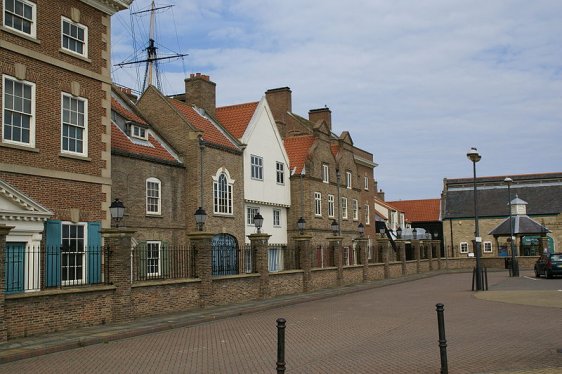Hartlepool is a coastal town and seaport in County Durham, England. It has a population of around 90,000 people (2012 estimate).
 St Hilda's Church, Hartlepool Headland: Source: https://commons.wikimedia.org/wiki/File:St._Hilda%27s_Church,_Hartlepool_Headland.jpg
St Hilda's Church, Hartlepool Headland: Source: https://commons.wikimedia.org/wiki/File:St._Hilda%27s_Church,_Hartlepool_Headland.jpgAuthor: Richard Atkinson

Hartlepool traces its beginnings to the founding of Hartlepool Abbey, a Northumbrian monastery, in the 7th century AD. The area has been inhabited even earlier, going back to pre-Roman times. After the Romans departed Britain, it was taken over by the Anglo Saxons.
By the 19th century, Hartlepool was a small town in decline. The town leaders however had the foresight to plan a railway line connecting it with the Durham coalfield, turning the aging seaport into a coal-exporting center. This brought a wave of industrialization to town, and a host of subsidiary industries, from shipbuilding and repair. One of its shipyards had the largest tonnage in the world.
 Hartlepool, England: Source: https://commons.wikimedia.org/wiki/File:2009.06.16.162357_Hartlepool_GB.jpg
Hartlepool, England: Source: https://commons.wikimedia.org/wiki/File:2009.06.16.162357_Hartlepool_GB.jpgAuthor: Hermann Luyken

The importance of Hartlepool as an industrial center attracted German bombings during the First World War. It so severely crippled the heavy industries of Hartlepool that by the Second World War, the town was in decline. A long period of slow growth and high unemployment followed. Only at the end of the 20th century that the dock area of Hartlepool receive much needed investment, enabling the long-awaited redevelopment.
Visiting Hartlepool
If coming from London by car, take the A1(M) motorway, turning off at Junction 60 then continuing east on the A680 road until Hartlepool.Places of Interest in Hartlepool
- St Hilda's Church: Church with a history going back to the 7th century, when it was founded by St Aidan.
 Latest updates on Penang Travel Tips
Latest updates on Penang Travel Tips

Copyright © 2003-2025 Timothy Tye. All Rights Reserved.

 Go Back
Go Back